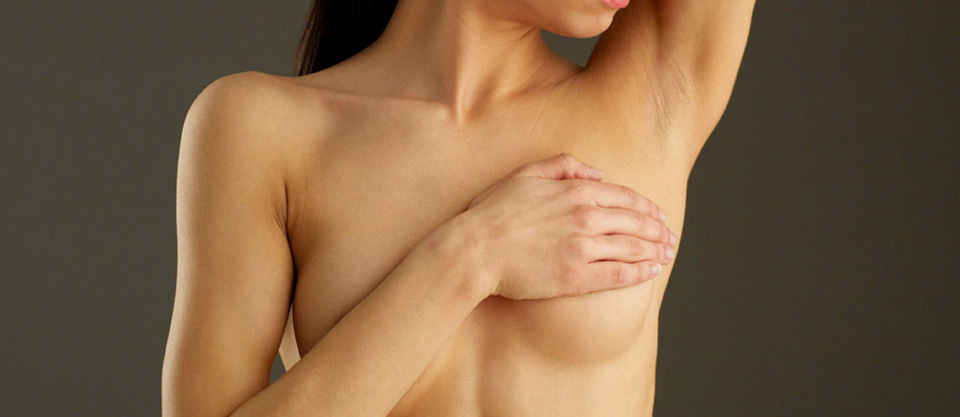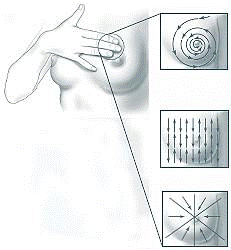
How to check your breasts
One of the easiest ways to prevent big problems is to get to know your body. Then if something changes even slightly you notice it quickly and can get it addressed. So you need to get to know your breasts. Then if there are any changes you can quickly and easily get them checked out. Stay in control of your health.
If you notice any of these symptoms and need advice or help, either call us here at Bodyworks or get in touch with your doctor:
- A lump
- Swelling
- Skin irritation
- Dimpling
- Pain
- Nipple retraction (nipple turns in)
- Redness of nipple or breast skin
- Scaly nipple or breast skin
- Nipple discharge
When to do your breast self-exam
The best time to do your breast self-exam is a few days after your period ends each month. Your breasts are less tender or swollen at this time. If you are not having periods, try to do the exam on the same day each month. Some women choose the first day of each month to help them remember. Your breast exam should take about 3 minutes per breast. It is very important to be thorough and to cover all of the breast tissue.
Looking
- The self-exam should always be done in good light.
- Stand or sit in front of a mirror.
- Place arms at your sides.
- Look for dimpling, puckering, or redness of the breast skin, discharge from the nipples, or changes in breast size or shape.
- Look for the same signs with your hands pressed tightly on your hips and then with your arms raised high.
Feeling
- You are feeling for any changes. You can do this lying flat on your back, standing, or when you are taking a shower or bath.
- It is often easier to examine your breasts when they are smooth and wet with soap and water.
- It is a good idea to examine your breasts both ways – lying down and standing.
- Examine one breast at a time using one of the three methods on the right.
- Feel with the pads (not tips) of your three middle fingers. With your right hand, keeping the fingers flat and together, gently feel your left breast without pressing too hard.
- Then change hands and examine the other breast.
- You are feeling for any changes. You can do this lying flat on your back, standing, or when you are taking a shower or bath.
- It is often easier to examine your breasts when they are smooth and wet with soap and water.
- It is a good idea to examine your breasts both ways – lying down and standing.
- Examine one breast at a time using one of the three methods on the right.
- Feel with the pads (not tips) of your three middle fingers. With your right hand, keeping the fingers flat and together, gently feel your left breast without pressing too hard.
- Then change hands and examine the other breast. Examine the upper chest area and below the armpits – these places also have breast tissue.
Pick a method
 Circle. Begin at the top of your breast and move your fingers slowly around the outside in a large circle. When you return to the top, move your hand a little closer to the nipple and make a smaller circle. Do this in smaller and smaller circles until you have examined all of the breast tissue.
Circle. Begin at the top of your breast and move your fingers slowly around the outside in a large circle. When you return to the top, move your hand a little closer to the nipple and make a smaller circle. Do this in smaller and smaller circles until you have examined all of the breast tissue.
Lines. Begin in the underarm area. Slowly move your fingers down until they are below your breast. Move your fingers closer toward your nipple and go slowly back up, using the same motion. Use this up-and-down pattern all the way across your breast.
Wedge. Begin at the outside edge of your breast. Slowly work your way in toward the nipple, doing one wedge-shaped section at a time. Do this until the entire breast area has been examined.
Be sure to examine the nipples. Gently squeeze the nipple and check for any discharge.
What you are examining
Few women realise the large area of their chest that is actually covered by breast tissue. It may extend from just below the collar bone to the level of the 6th rib and from the edges of the breast bone to the underarm area. A portion even reaches into the armpit region. Breasts are influenced by the volume of tissue and fat, a woman’s age, history of pregnancies and lactation, heredity, the quality and elasticity of the skin, and the influence of breast hormones. Because of this variety of tissue textures, the breast may often feel lumpy. This is often more obvious in small breasts that have less fat and becomes less obvious after menopause when endocrine stimulation of the breast ceases and glandular tissue softens.
This clear and helpful video from Breast Cancer Now, a UK breast cancer charity, helps to explain how to do it.
It is very important that you get to know your breasts as they will change throughout your cycle and your life.

Leave a Reply